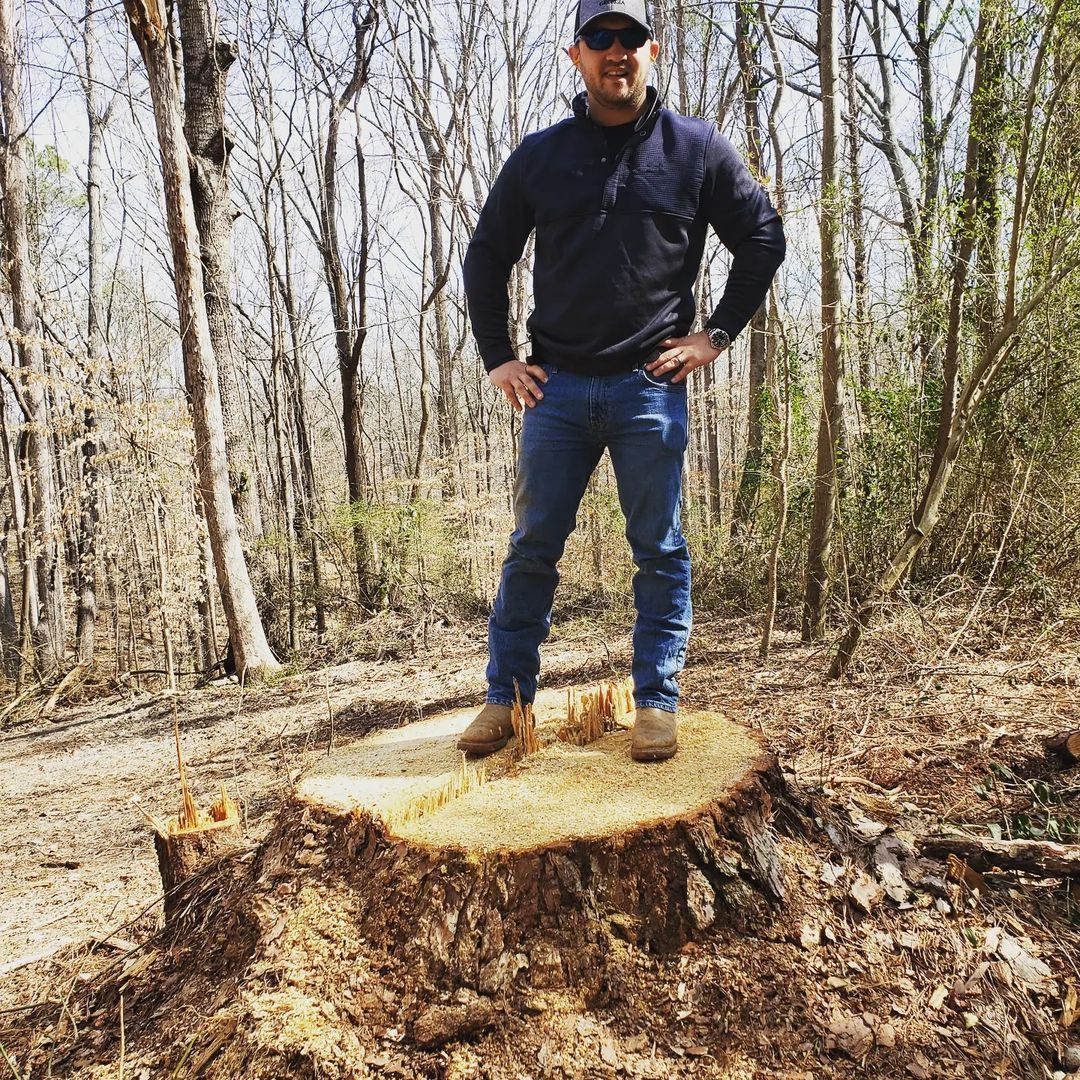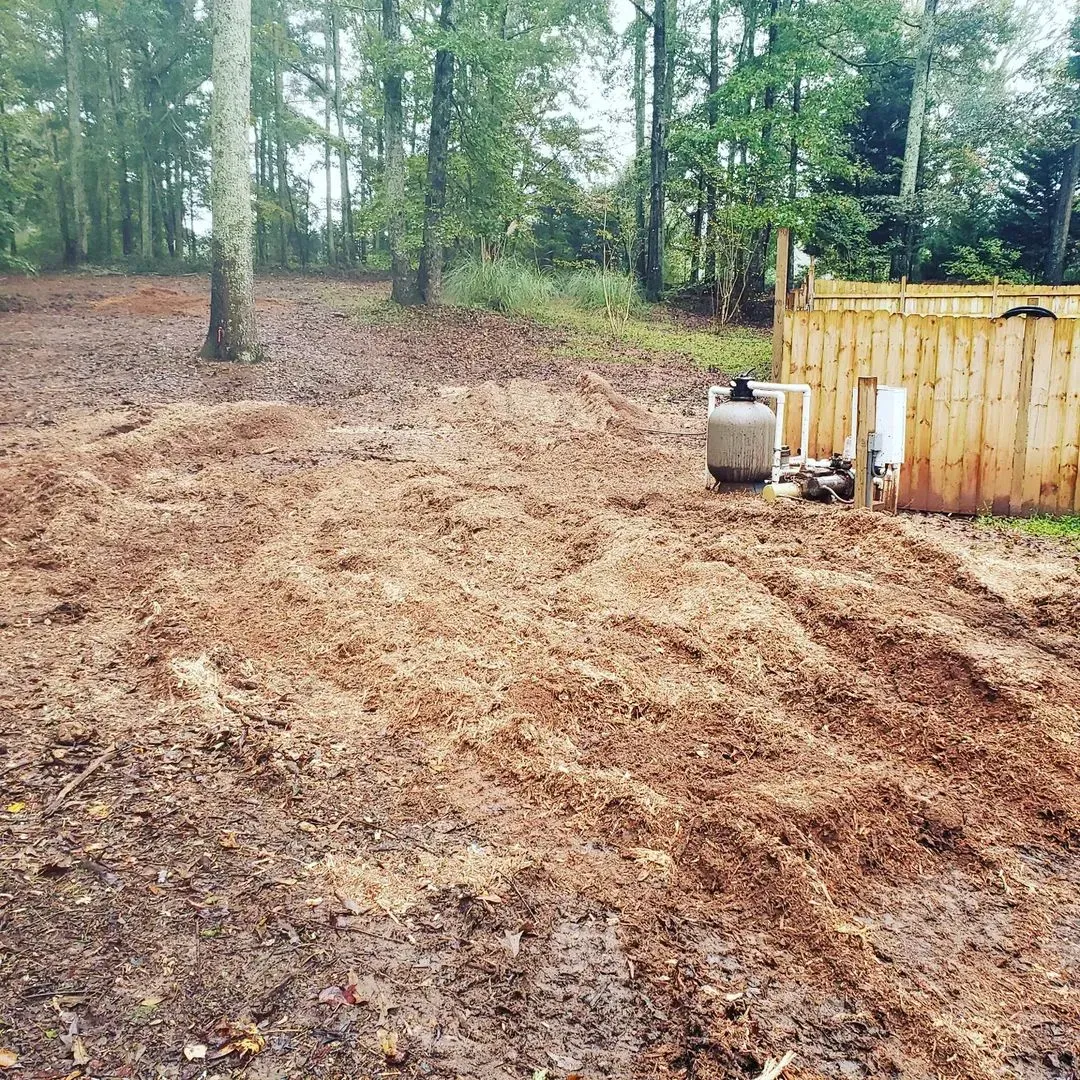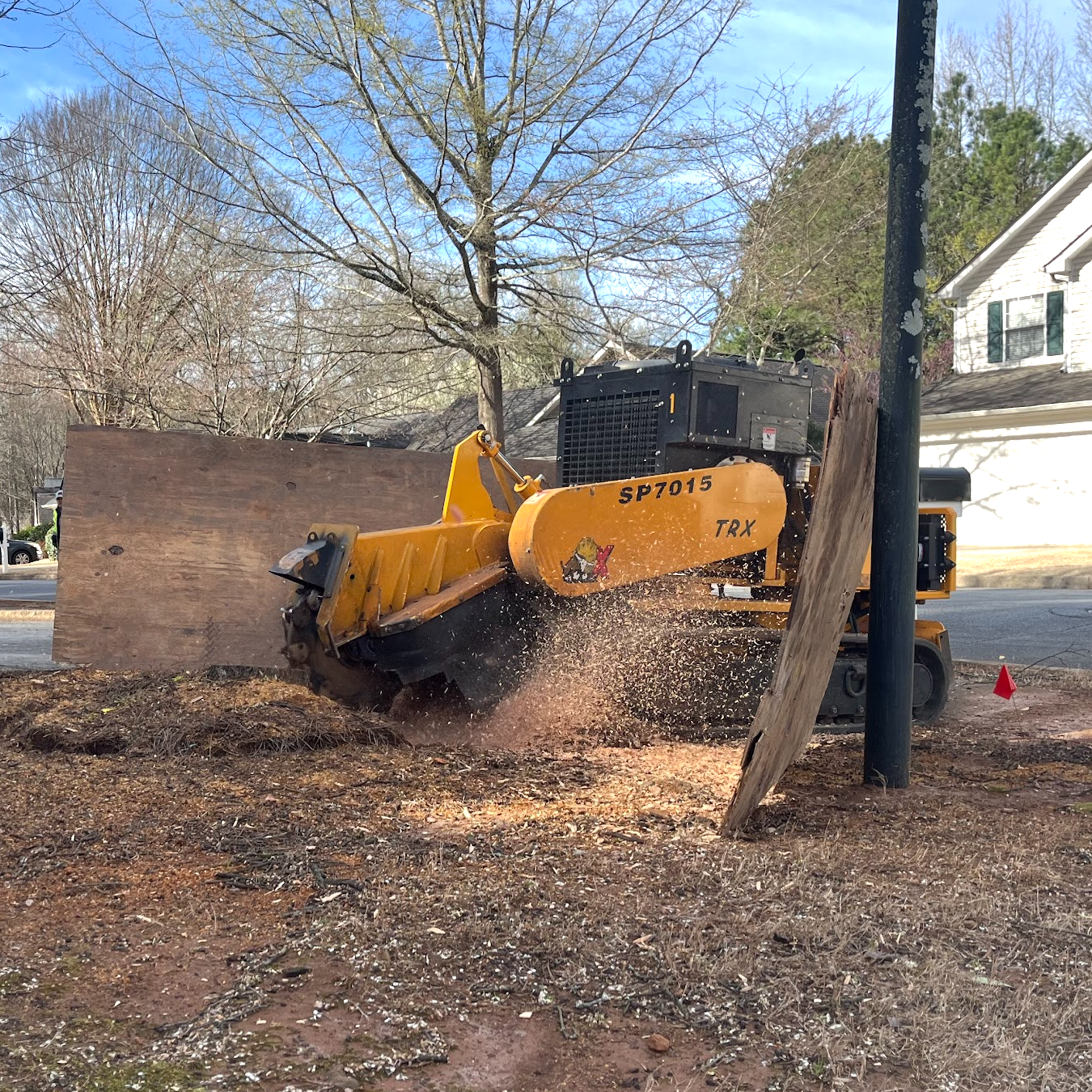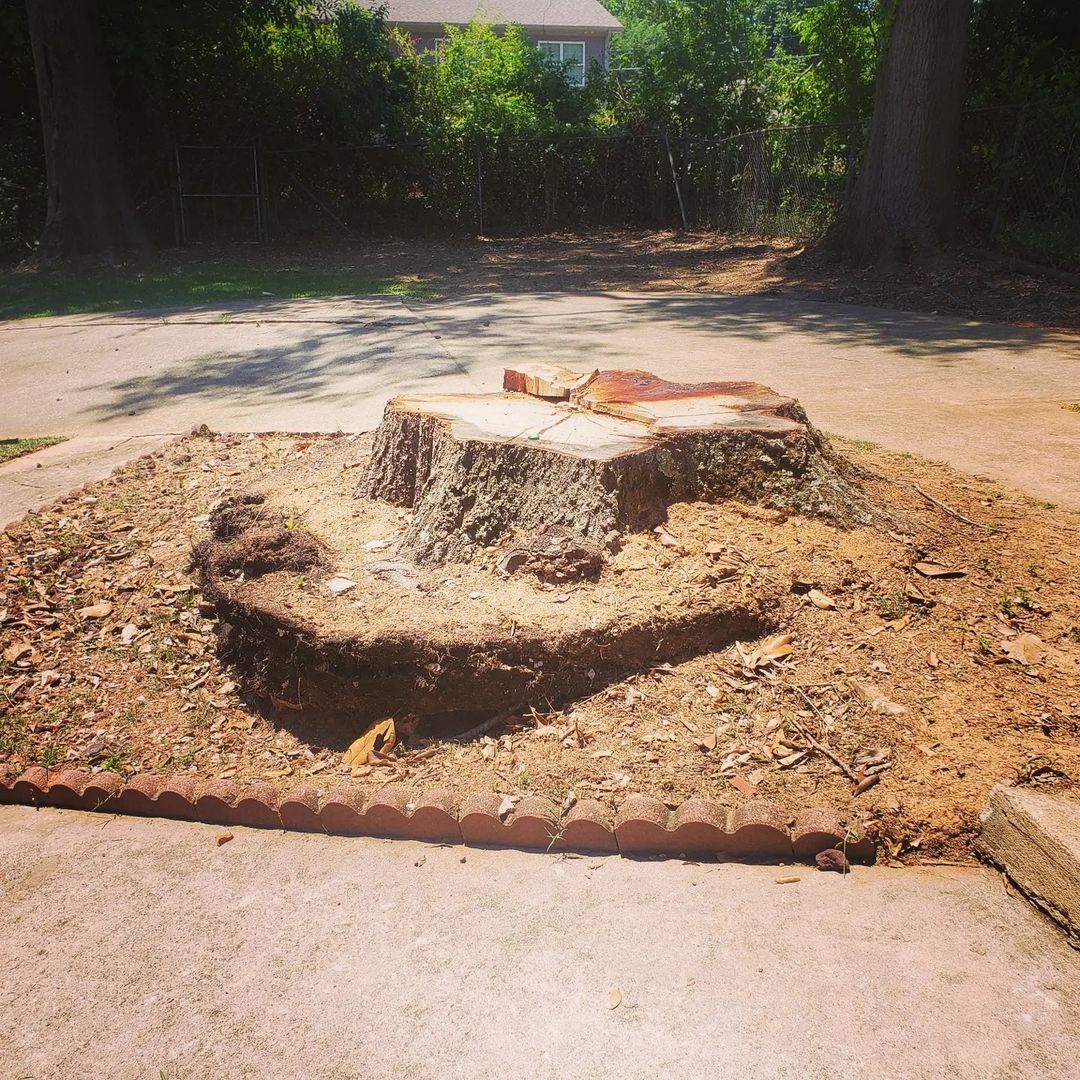Can stump grinding remove the entire root system?
Stump grinding is a prevalent method for dealing with tree stumps after a tree has been removed. It is often chosen for its speed and efficiency, but many property owners in Atlanta, GA, are left wondering about the thoroughness of this method, particularly when it comes to the removal of the entire root system. In this blog post, we will delve into whether stump grinding can effectively remove the complete root system of a tree and the implications this has for your property.
What is Stump Grinding?
Stump grinding involves using a machine equipped with a high-speed rotating cutting disc that chips away at the wood of the stump. This process grinds the wood into small chips and typically goes down to a depth of 6 to 12 inches below the ground level. The main goal of stump grinding is to remove the visible remnants of the tree stump, making the area more aesthetically pleasing and easier to manage.
The Reach of Stump Grinding
While stump grinding is effective in removing the visible stump, its ability to remove the entire root system is limited. Here’s what you need to know:
- Depth and Breadth: Standard stump grinding reaches depths of 6 to 12 inches, which is sufficient to remove the bulk of the stump itself. However, tree roots can extend far beyond this depth and spread out extensively under the soil surface. Most roots, especially those of large, mature trees, can spread horizontally at least as far as the tree is tall.

- Root System Structure: Trees have two types of roots—structural and feeder roots. Structural roots are the large roots that provide stability and support for the tree. These are usually located within the first few feet of soil. Feeder roots, which absorb nutrients and water, are smaller and more widespread. Stump grinding mainly affects the structural roots and may not reach the smaller, more extensive feeder roots.
Implications of Partial Root Removal
Since stump grinding does not remove all roots, there are several implications for the property:
- Decomposition: The remaining roots will eventually decompose naturally, a process that can take several years depending on the wood type and soil conditions. During this time, the decaying roots may attract insects or pests that could potentially affect other plants or structures nearby.
- Soil Stability: As roots decompose, they can leave voids in the soil, which might affect soil stability. This is particularly important in areas that will be used for new construction or where soil erosion might be a concern.
- Regrowth: Some tree species are capable of sprouting new growth from the remaining roots. If the entire root system isn't removed or treated with herbicides, there might be a risk of the tree regrowing from the leftover roots.
Alternatives and Additional Measures
For those who need complete root removal, there are a couple of alternatives or additional steps that can be taken:
- Full Root Removal: This method is more invasive and involves excavating the stump and all major roots. It is more disruptive and costly but is necessary where new construction will occur or where an entirely clear area is required.
- Chemical Treatments: In some cases, applying appropriate herbicides to the remaining roots can prevent regrowth. It’s crucial to consult with a professional to select the right chemicals and application methods to avoid harming other vegetation or the environment.
- Monitoring and Maintenance: After stump grinding, monitoring the area for signs of pest infestation or unexpected growth can help manage potential issues promptly. Regular maintenance and inspections can ensure that the stump and roots do not cause unforeseen problems later.
Stump grinding is an effective and efficient method for removing tree stumps but does not usually eliminate the entire root system. Understanding the limitations of this technique helps property owners in Atlanta, GA, make informed decisions about managing their landscape after a tree removal. By considering the structure of the tree's root system and the future use of the area, you can choose the most appropriate method for dealing with leftover tree stumps and roots, ensuring the long-term health and stability of your property.
If you're contemplating the use of a
stump grinder on your property and are in search of professional guidance or services, feel free to
contact us here at
Ness Stump Grinding. We invite you to reach out for a customized consultation and to receive a complimentary estimate. Allow us to assist you in restoring your landscape and transforming your vision into a tangible reality. With our expertise at your disposal, you can confidently address any stump-related issues and enhance the beauty and usability of your outdoor space.
Like This Post? Share It Here...










